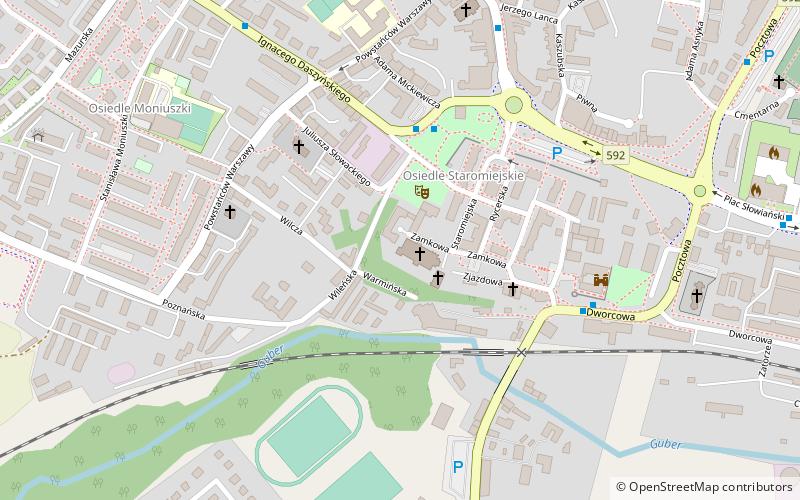Kościół Św. Jerzego, Kętrzyn


Facts and practical information
Collegiate Basilica of St. George in Ketrzyn - St. George's church built on the site of a former watchtower from 1359, extended until the first years of the 16th century.
The best preserved defensive church in Masuria. Initially it was a hall-like, one-nave building located in the southwestern corner of the town. In the crown of the walls defensive porches and a tower topped with a blanket were built. At the beginning of the fifteenth century a second tower was erected, and at the end of the century the building was rebuilt into a three-nave pseudo-basilica. After the fire in 1500, during the reconstruction, the existing and characteristic deviation of the church axis was created. Noteworthy in the church are the crystal vaults from 1515. the sixteenth-century pulpit, the organ from 1721. were rebuilt - the current one from 1975 has 43 voices, the tombstone of Christopher Schenk von Tautenburg from 1597 and the punishment room located under the high tower.
Until World War II it was called the "German church". After the Germans were expelled in 1945, the church was used by the Evangelical parish in Kętrzyn. A year later, in 1946, the building was requisitioned by the communist authorities and immediately handed over to the Roman Catholic Church.
As a Roman Catholic church, St. George's Church has had the title of Minor Basilica since July 22, 1999, and has also served as a collegiate church since June 7, 1992. After the Reformation, the former chapel of St. James was used as a baptistery, which after 1946 was modeled after the Gates of Dawn in Vilnius. Walking pilgrimages to Vilnius always take place from here at the beginning of July.
Within the preserved defensive walls, adjacent to the church of St. George, there is a former vicarage built in the Middle Ages, and later pastor's house, converted in the nineteenth century into a gymnasium, until 1945 functioning as a so-called Widow's House - a place of residence for the wives of deceased priests. In 2011, by the outer walls of the former pastor's house, archaeological excavations were conducted, led by archaeologist Mariusz Biel. As a result, the current technical condition of the foundation walls was documented and the cultural layers were registered, along with the monuments. The material made it possible to distinguish as many as 5 chronological phases on the church hill, including the oldest settlement phase of the 14th-15th centuries.
A gate at the west façade leads to the interment area, where a lapidarium has been set up to house historic tombstones, monuments, epitaphs and cast iron crosses.
Kościół Św. Jerzego – popular in the area (distance from the attraction)
Nearby attractions include: Wolf's Lair, Cerkiew greckokatolicka Świętego Bazylego Wielkiego, Cerkiew Świętego Bazylego Wielkiego.



